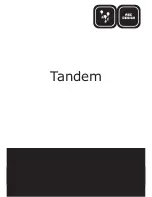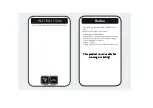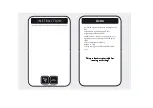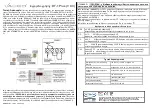
V
-
21A
WELD TESTING
19
2. NON DESTRUCTIVE TESTING.
Generally the most practical way of testing threaded stud welds, without destroying the
stud, is with the use of proof tests. A torque wrench is particularly useful for this purpose.
Below and overleaf are some tables which you may find useful. However, it must be noted
that :
•
Formulas & data shown are intended for guidance only.
•
In applications where control of preload is important, the torque
-
tension
relationship should be determined experimentally on the actual parts involved
including any lubricants.
•
The coefficient of friction (k) varies with material, surface finish and lubricity of
threads and bearing areas of fastened parts.
•
For standard steel screws it is 0.19 to 0.25 and 0.13 to 0.17 for plated screws. Anti
-
seize materials and lubricants can lower k to 0.05. For some stainless steel threads
and parts not coated or lubricated k may be as high as 0.33
•
All the figures are approximate and do not form part of any specification.
•
Designers and specifiers must satisfy themselves that the studs and materials chosen
are suitable for their particular application.
All torque figures are calculated by the formula :
T = kDP
Where
:
T = Torque (Nm)
D = Effective Stud Diameter (m)
k = Coefficient of Friction (0.2 used for calculations)
A broader explanation of these methods may be found in standard BS EN ISO 14555:2014, Section
11 (Examination and Testing).
Material properties:
(N/mm²)
(N/mm²)
(N/mm²)
UTS
Yield
Safe
Mild Steel (4.8)
420
340
272
Stainless Steel (1.4301)
540
350
280
Note: safe loads are 80% of the yield
Содержание 1200E
Страница 34: ...V 21A PCB s LED GUIDE see page 9 for display PCB LED s 34...
Страница 35: ...V 21A CIRCUIT SCHEMATICS 35...
Страница 36: ...V 21A CIRCUIT SCHEMATICS 36...
Страница 37: ...V 21A CIRCUIT SCHEMATICS 37...
Страница 38: ...V 21A CIRCUIT SCHEMATICS 38...
Страница 39: ...V 21A CIRCUIT SCHEMATICS 39...
Страница 40: ...V 21A CIRCUIT SCHEMATICS 40...
Страница 41: ...V 21A CIRCUIT SCHEMATICS 41...
















































